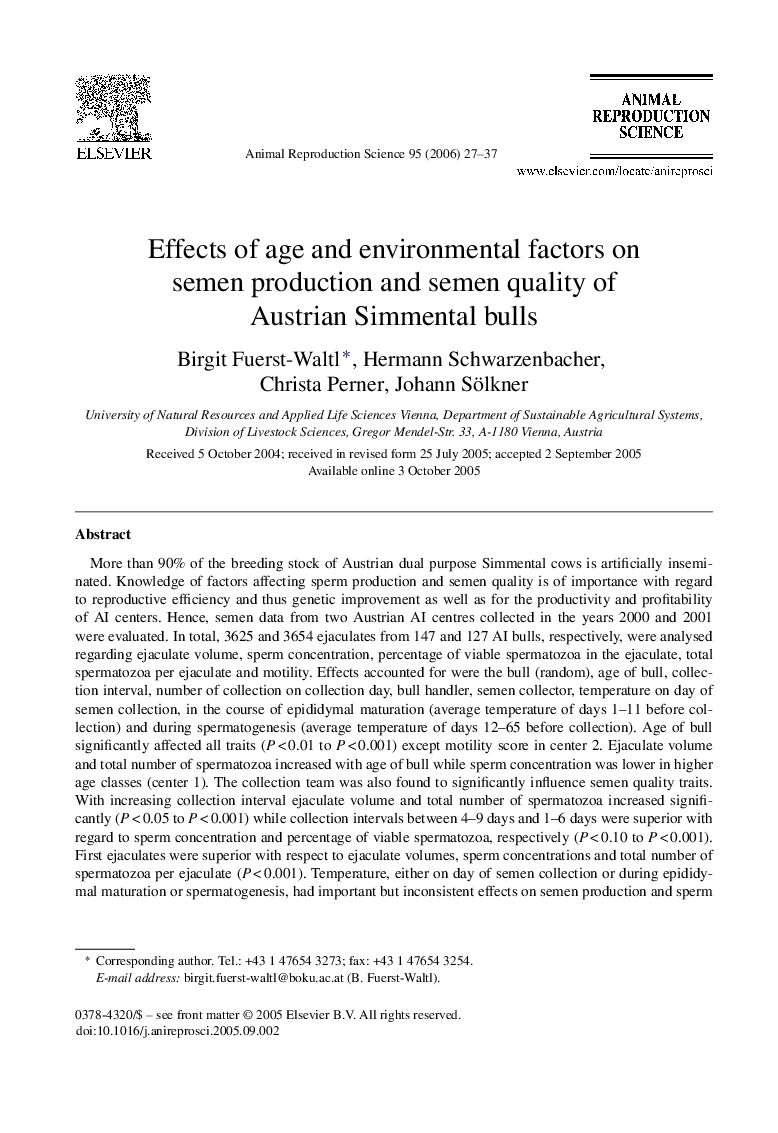| کد مقاله | کد نشریه | سال انتشار | مقاله انگلیسی | نسخه تمام متن |
|---|---|---|---|---|
| 2074843 | 1544826 | 2006 | 11 صفحه PDF | دانلود رایگان |

More than 90% of the breeding stock of Austrian dual purpose Simmental cows is artificially inseminated. Knowledge of factors affecting sperm production and semen quality is of importance with regard to reproductive efficiency and thus genetic improvement as well as for the productivity and profitability of AI centers. Hence, semen data from two Austrian AI centres collected in the years 2000 and 2001 were evaluated. In total, 3625 and 3654 ejaculates from 147 and 127 AI bulls, respectively, were analysed regarding ejaculate volume, sperm concentration, percentage of viable spermatozoa in the ejaculate, total spermatozoa per ejaculate and motility. Effects accounted for were the bull (random), age of bull, collection interval, number of collection on collection day, bull handler, semen collector, temperature on day of semen collection, in the course of epididymal maturation (average temperature of days 1–11 before collection) and during spermatogenesis (average temperature of days 12–65 before collection). Age of bull significantly affected all traits (P < 0.01 to P < 0.001) except motility score in center 2. Ejaculate volume and total number of spermatozoa increased with age of bull while sperm concentration was lower in higher age classes (center 1). The collection team was also found to significantly influence semen quality traits. With increasing collection interval ejaculate volume and total number of spermatozoa increased significantly (P < 0.05 to P < 0.001) while collection intervals between 4–9 days and 1–6 days were superior with regard to sperm concentration and percentage of viable spermatozoa, respectively (P < 0.10 to P < 0.001). First ejaculates were superior with respect to ejaculate volumes, sperm concentrations and total number of spermatozoa per ejaculate (P < 0.001). Temperature, either on day of semen collection or during epididymal maturation or spermatogenesis, had important but inconsistent effects on semen production and sperm quality. Overall, however, ambient temperatures in the range of 5–15 °C were found to be optimal for semen production.
Journal: Animal Reproduction Science - Volume 95, Issues 1–2, September 2006, Pages 27–37